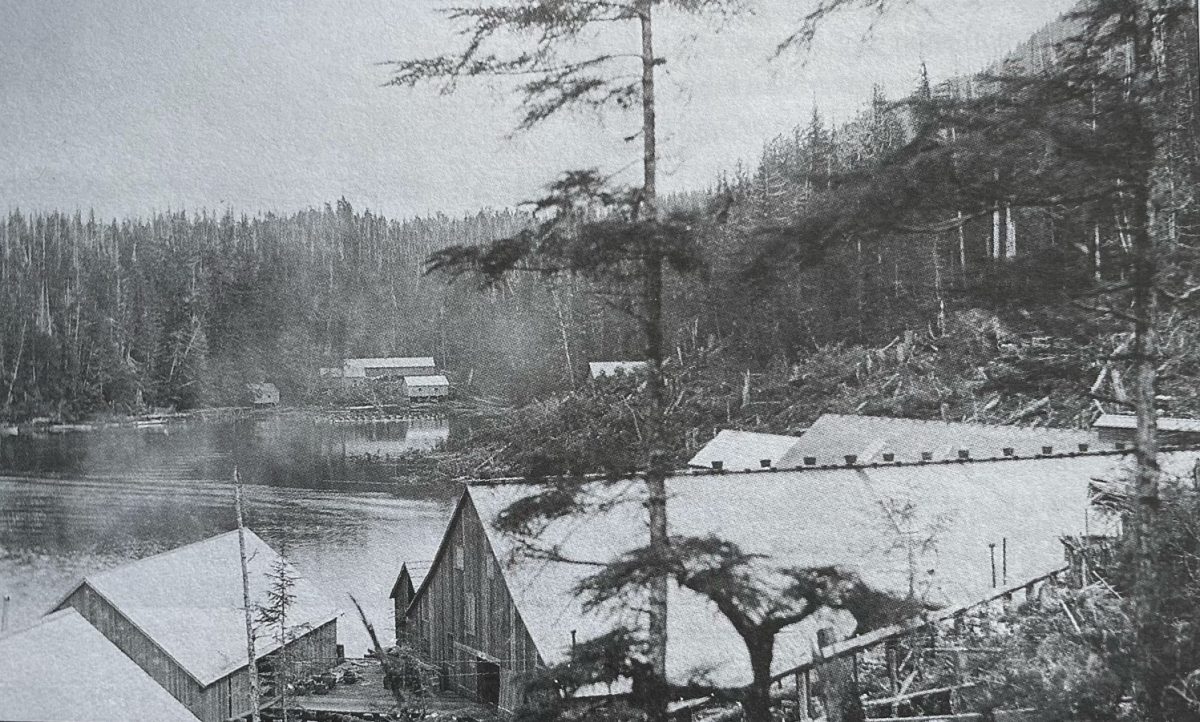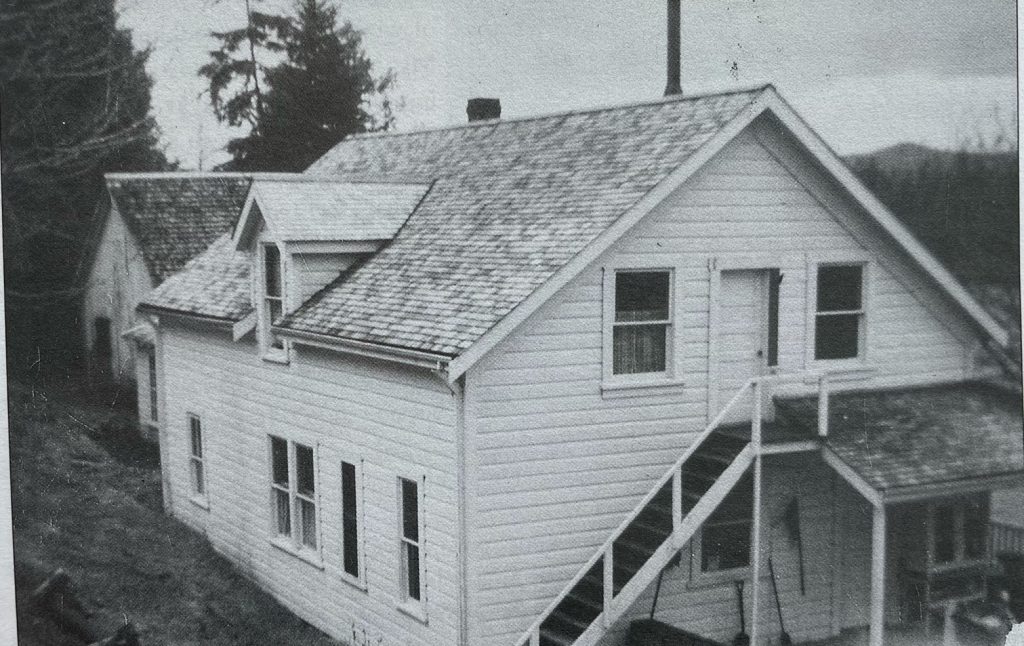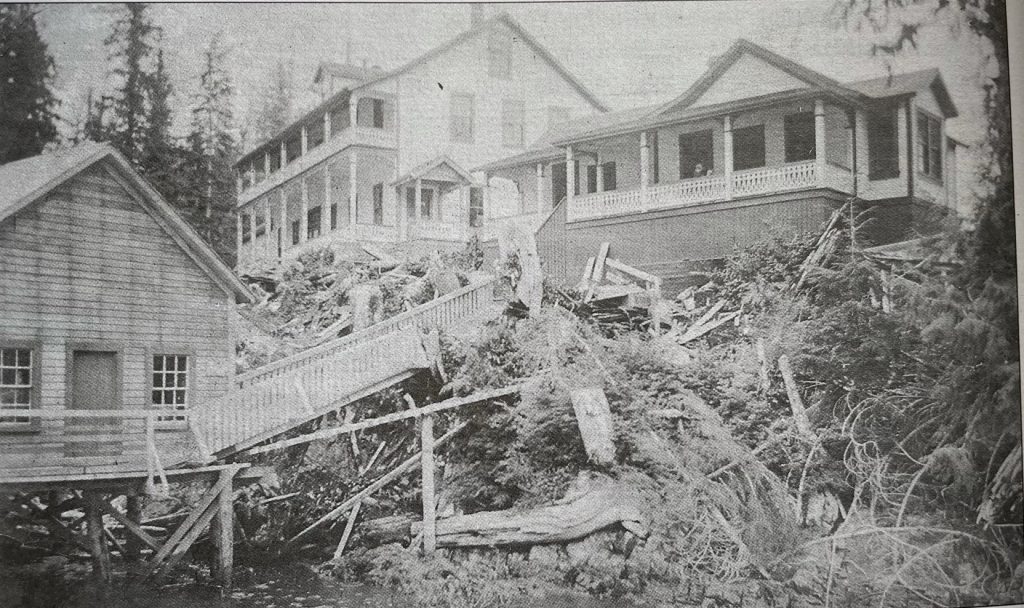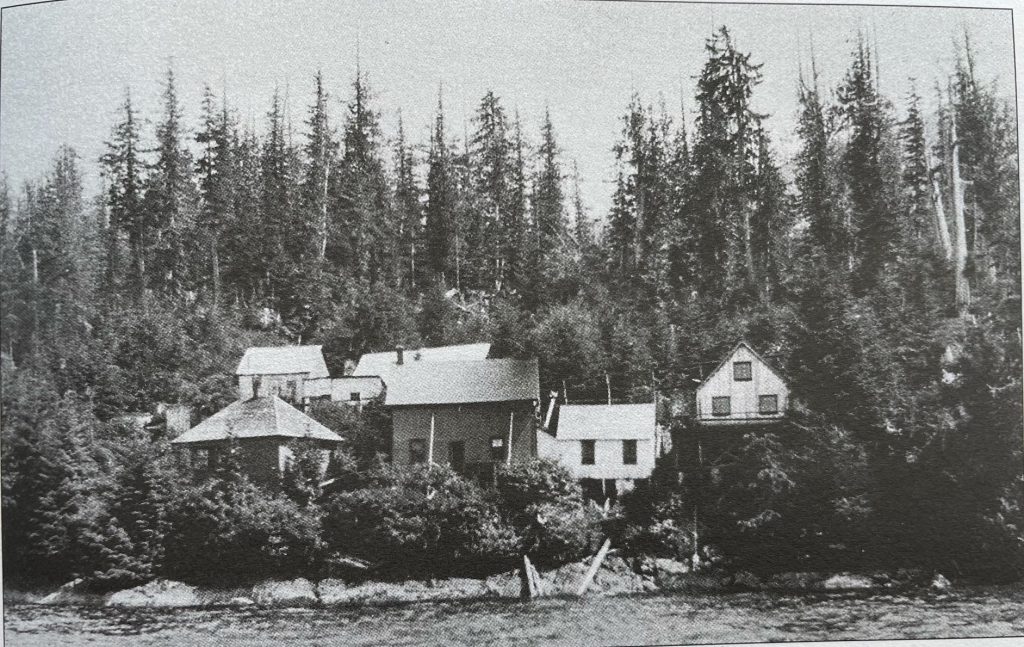The Influence of Pre-Contact Native Settlements on the Construction of Good Hope Cannery and Other Newly Established Colonial Fish Canneries
Good Hope Cannery is a large gable-roofed structure with two perpendicular, long rectangular wings, creating an ‘L’ shaped plan, surrounded by smaller servicing structures, connected by boardwalks. It rests on wooden pilings and beams, some still closely resembling the over 150 foot trees used to make them. All the wood from the cannery and surrounding buildings was harvested from the very shore the Cannery calls home; although, the building itself rests almost entirely over the tidal waters of the Wuikinuxv First Nation, or Rivers Inlet, British Columbia, Canada. For the reason of securing building materials, canneries, including GHC, always had very large parcels of land attached to them, despite their footprint mostly occupying water.1 The main Cannery structure is one large production house, with various production stages – cleaning, processing, canning, packaging – all housed at different points throughout the mostly open plan of the structure. The primary purpose of the building was to process the salmon catch; populated with fishermen during the season, accompanied by their families to work the production lines, and produce a marketable product of canned processed salmon. These roles were mostly filled by local Natives, but included Japanese, Chinese, and Europeans, with the owner of the camp, Henry Bell-Irving, coming from Scotland in 1882, and commissioning the Good Hope Cannery in 1894.2
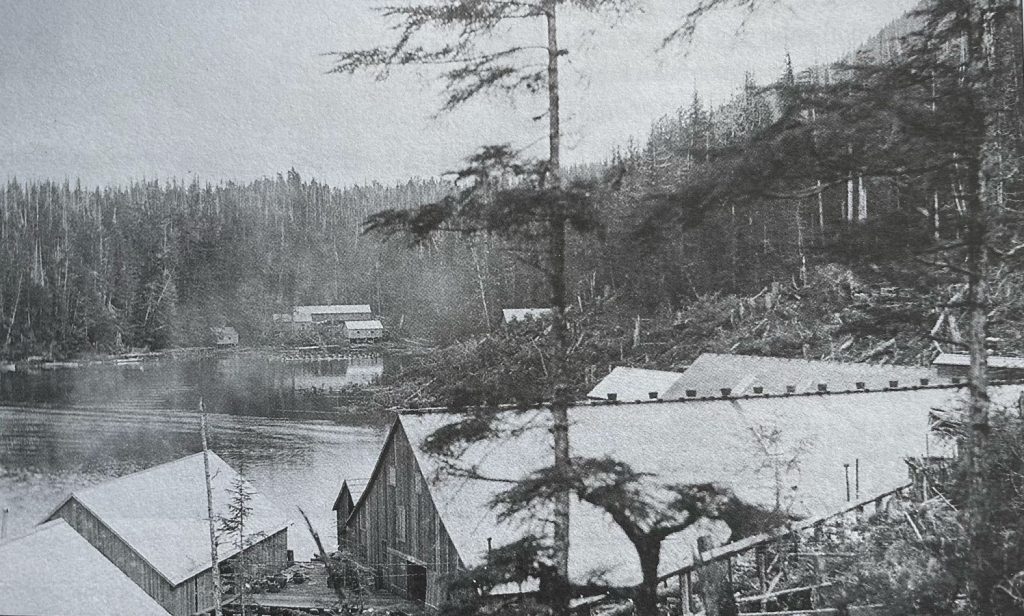
Although it is clear that a diverse range of backgrounds and cultural influence converge at Good Hope Cannery, the culture of First Nations communities along the west coast of North America, and specifically the nation of Wuikinuxv and surrounding Wakashan-speaking peoples, is a particularly strong influence on Good Hope Cannery and similar institutions dotting the coast, both in design and function. European Colonizers simultaneously reduced existing Nations to subordinate subjects, while extracting and using these nations’ traditional methods for their own gain. Like many times before them in history, colonizers pay no tribute to the intelligence and intricacy of the communities they are colonizing, while at the same time acknowledging their legitimacy by adopting the very same practices.
1) Ted Walkus, Hereditary Chief of Wuikinuxv First Nation, in conversation with the Author, 2021.
2) MacDonald, Bruce. The Good Hope Cannery: Life and Death at a Salmon Cannery. Caitlin Press, (2011), 23.
Location: Salmon-Based Settlements
Firstly, and perhaps most obviously, is the influence of Native settlements on the location of Good Hope Cannery. GHC was one of many canneries that represented the move of European colonizing forces beyond the final frontier of western land, and into the new frontier of coastal waters and ocean-bound resources. The Cannery was to provide infrastructure and services in remote areas. Good Hope, like all other canneries on the coast, established itself near a river: the source of the main prize of remote settlement, Salmon. However, setting up camp near abundant salmon was not a new practice. Meaningful archaeological evidence, outlined in Kenneth M. Ames’s work on large domestic structures, shows a history of First Nations settlement and salmon dating back at least 5000 years BP, with specific references to rectangular structures (like the cannery) as early as 3000 BP.3 Not only does Ames outline these historical settlements, but also details specifics of structural housing, in the form of Plank Houses, and their larger function in the lasting culture, emphasizing the sophistication of these communities. Ames goes as far as saying that these early examples of structures, Plank Houses, “can legitimately be viewed as storage boxes” and “food-processing and food-storage facilities” with reference specifically to “salmon and salmon storage” and their importance “beyond the subsistence economy”.4 The search for wealth through salmon is at least as old as the earliest signs of riverside settlements, with hierarchical and economical society, complete with salmon processing facilities, developing long before the arrival of Europeans. Although humans had been living and thriving off of salmon for millennia, Good Hope Cannery and other canneries like it represented an increase in capital and production which would significantly increase the wealth extracted from the coast, while threatening the environment and its vast supply of resources in unprecedented ways.
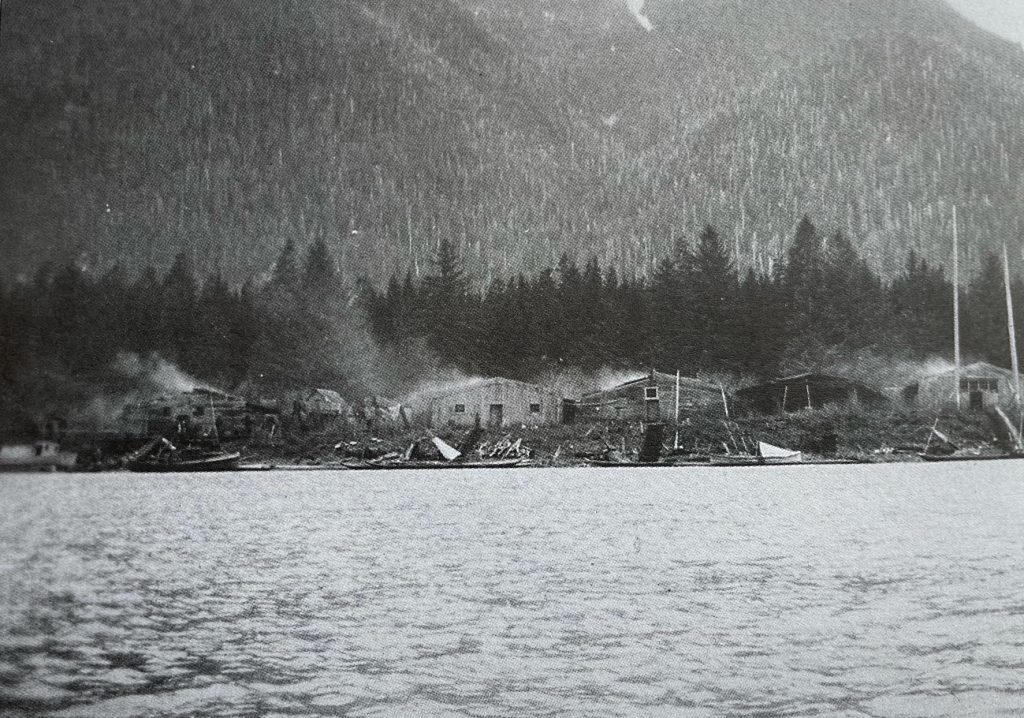
3) Ames, Kenneth. (1996). Life in the Big House: Household Labor and Dwelling Size on the Northwest Coast. People Who Lived in Big Houses: Archaeological Perspectives on Large Domestic Structures. 131-150.
4) Ibid, 146.
Architecture and First Nations Influence
Good Hope Cannery’s physical design closely resembles the housing structures of first nations communities from around the surrounding areas, and that specifically of the Wuikinuxv on the Wannock River in Rivers Inlet. Firstly, the cannery is positioned in a way that allows easiest access to the main resource: fish. Built on pilings extending up from a varied and wild ground below, the cannery spans from the shore, over the ocean, with its primary contact point closest to the open ocean and, above deep water, almost in the middle of the bay. This allowed fishermen to easily unload their catch, and subsequently, transporters (with sometimes large, deep vessels) to easily pick up the finished canned product and get it on its way to market – “usually Britain”.5 Similarly, early Wuikinuxv settlements always structured their entrance and main threshold closest to their main resource: the river. This was a trend continued generally up and down the coast pre-contact, with the entrance to most houses “in the center of the side nearest sea”.6 Additionally, early reports on these settlements indicate much of the first nations infrastructure was constructed on pilings, with direct access to canoes and the salmon-waters; river or ocean. One early report by Franz Boas in 1888 even details the pilings of these nations, with a sketch (Figure 3) showing a perspective of houses lined up along the water’s edge, and a section drawing of a platform resting on long vertical pilings, navigating a steep terrain and fluctuating tidal zone above the ocean. Boas goes on to describe this construction saying “it is difficult to level a slope of steep grade, and in such cases, it will be more convenient to support the house by piles”, acknowledging the consideration by these builders, and adding that this method, although varied, is seen up the coast of British Columbia; with wide spread use suggesting the long-history of this style of building. Hereditary Chief Ted Walkus of the Wuikinuxv Nation recalls stories of early builders driving these piles into the ground using large rocks.7 Good Hope Cannery, along with most colonial structures along the coast, is built using piles for the same reasons as these early Native structures: close and convenient access to fish and other resources, while managing tidal waters and steep, rocky terrain.
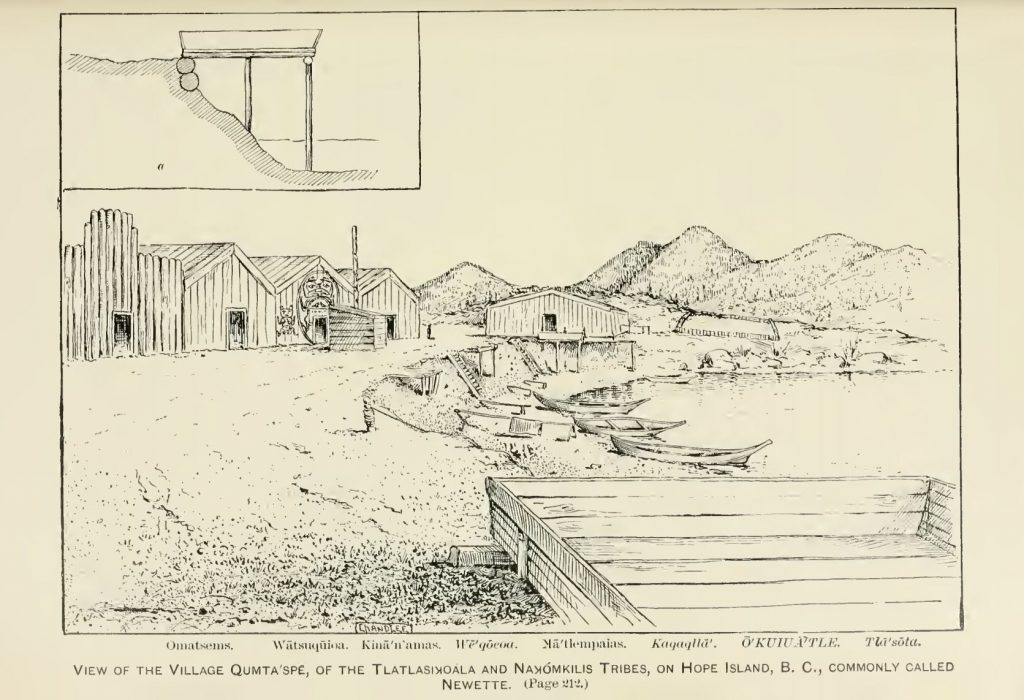
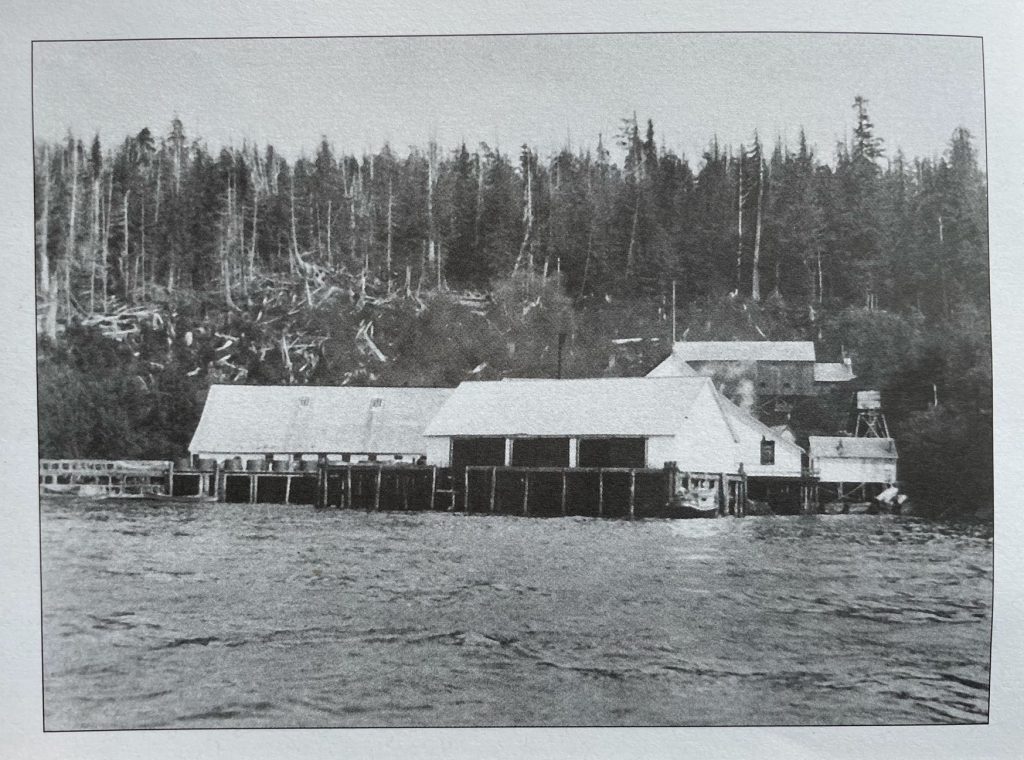
With early Native houses lining the important resource centers for existing nations before colonial contact, exhibiting a sort of blue-print for successful ocean-based infrastructure, it is easy to see why some elements of these houses, including their location, transferred into the design of Canneries. Interestingly, Europeans took extra efforts to make sure their living accommodations at the cannery were built and fashioned in a more traditional colonial style (Figure 5). The houses were actually set back on land, and built in a style more reminiscent of colonial settlement throughout the rest of the country. Cannery owners affirm their colonial architecture still has relevance, just not for the Cannery, as though to distinguish their residential life form the work and labor associated with the Native-style cannery building.
5) MacDonald, 24.
6) Boas, Franz. “The Houses of the Kwakiutl Indians, British Columbia.” Proceedings of the United States National Museum (1889), 198.
7) Ted Walkus, Hereditary Chief of Wuikinuxv First Nation, in conversation with the Author, 2021.
Organized Labor: Canneries and Before
With the pursuit of wealth comes the need of labor. Good hope Cannery relied on man-power to turn a profit for its owners. The majority of labor was from Natives, and “the families of Native Fishermen were as important as the fishermen themselves” to produce a product and profit.8 However, GHC and canneries in general also relied on people from around the world to fill various roles. The canneries were an amalgamation of immigrants and natives looking for a chance to profit off of salmon, all working under one, large spanning structure. The floorplan of GHC and most canneries (as seen in Figures 6 and 8) emphasized this; one large sprawling room connected by machinery and a production line populated by a diverse range of workers. Additionally, the cannery provided the necessary infrastructure in a remote outpost, however, still required the laborer’s to rely on their own expertise to ultimately catch and profit. In the same manner, the houses of the Wuikinuxv nation and surrounding peoples, before colonial contact, functioned in the same way. These communities were constantly fluctuating, housing not just local families but also nomadic relatives and acquaintances, as long as they “give help to their chief by providing services such as fishing”.9 Wuikinuxv houses in particular can be seen diagrammed as having “greater autonomy” due to the many hearths found at the sites, detailed in Figure 7. Many houses on the coast had one main hearth for the entire house, however, on the central coast, and near Rivers Inlet specifically, houses were known for having multiple hearths for each family or group residing in the house, and a main central hearth reserved for ceremonial activity. Archaeologists say these same houses, particularly of the Wuikinuxv people, “were built in such a way that they could be readily enlarged or reduced in size to accommodate changes in household size, due to a steady movement of people in and out of the houses”.10
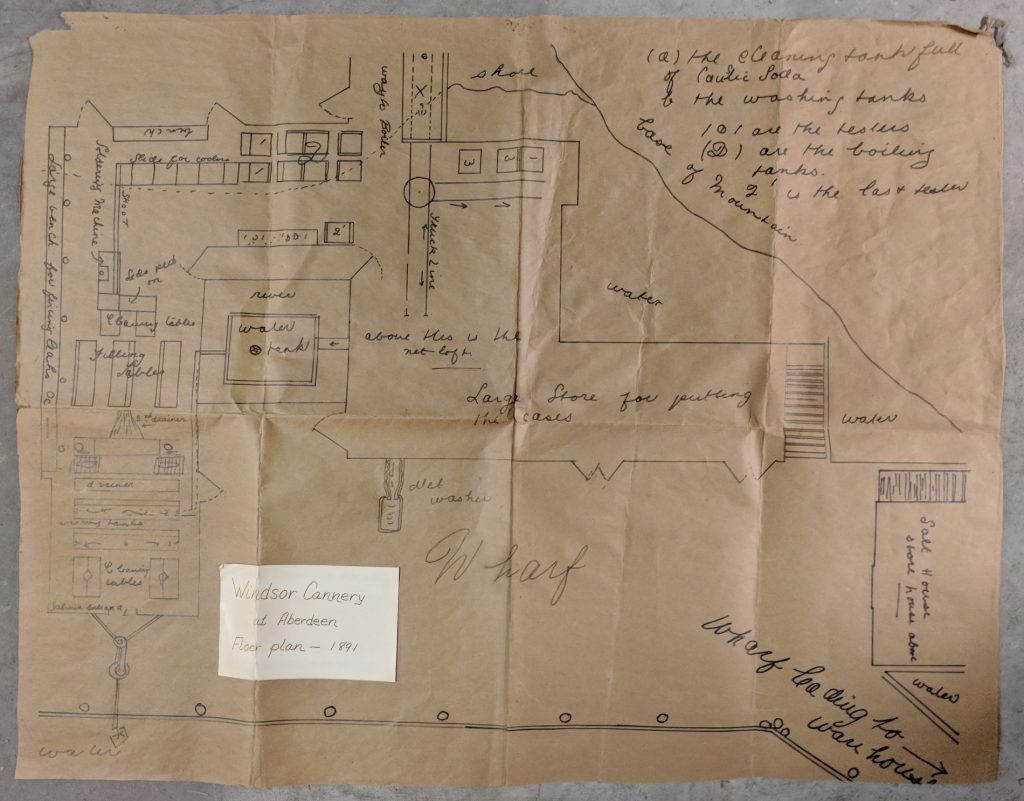
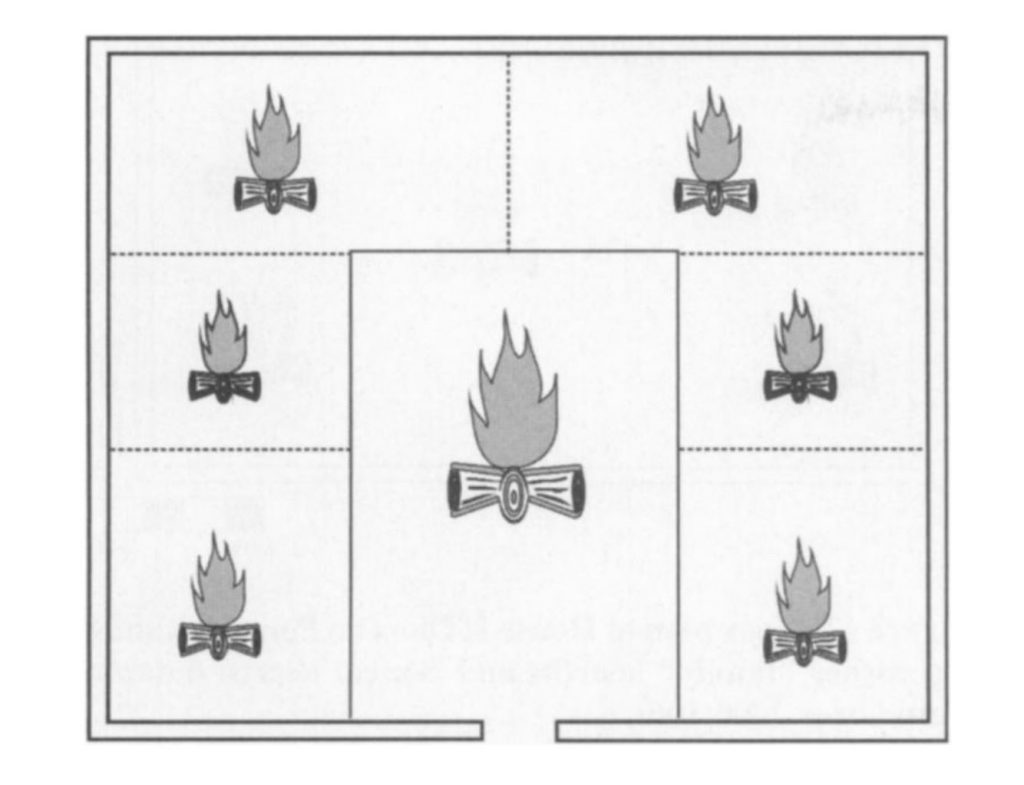
The context of Good Hope Cannery, similarly, features the one large open plan ‘L’ structure in the middle of the bay, with housing and other infrastructural requirements surrounding it. This centered the plan around the communal goal of salmon production, or the cannery itself, while allowing for some level of autonomy in everyday life for the laborers (still highly racially segregated). The sprawling plan also allows for expansion and retraction of certain amenities for fluctuation in labor, just as the big houses of the nations pre-dating the cannery had done.
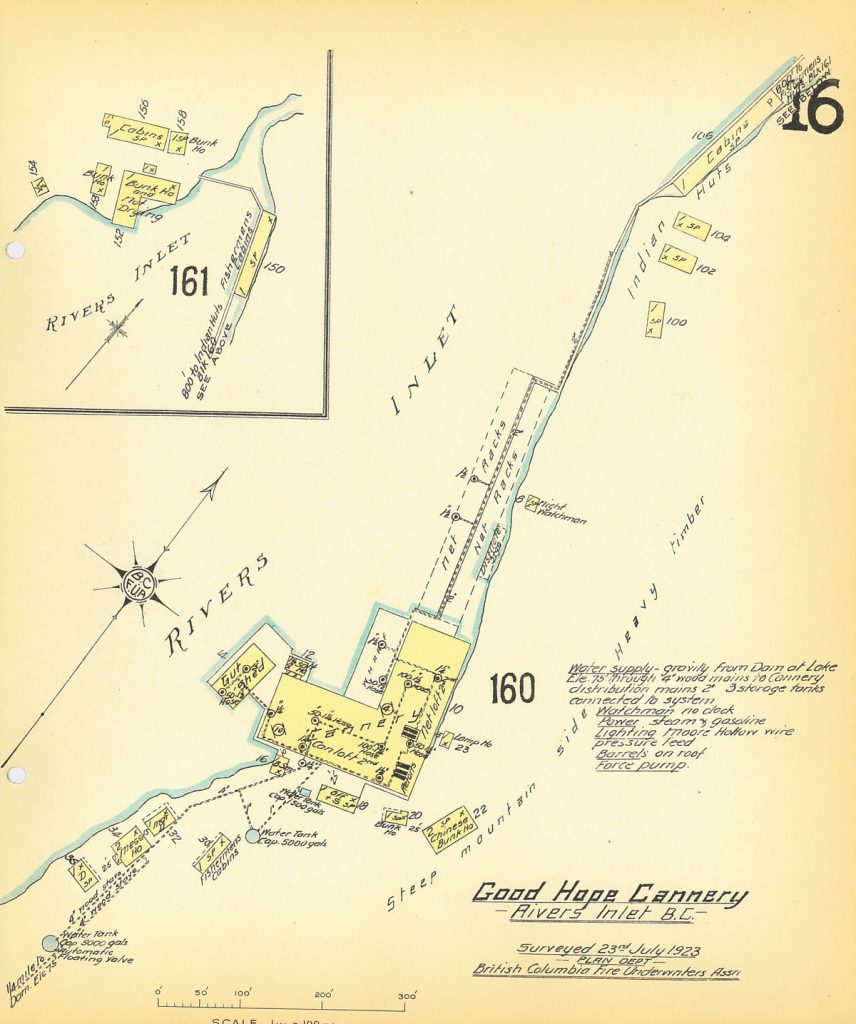
The reason behind the design specifications of early native housing parallel the outcomes of the more modern cannery buildings. The large open houses of the native coastal communities invited many peoples together under one roof, often for seasonal work or gatherings, working on common goals, like salmon extraction and preservation (while serving different roles), which would all ultimately benefit the head of the house, or in this case the chief. The chief, in turn, could “prepare enough to feed their people, trade, and gift to surrounding communities, but not in excess of what was needed”.11 Similarly with the Cannery, success of the common goal promised further development and economic opportunity for those involved. Much like how the Canneries relied on a diverse and ranging group of labor to come together and perform a common task, the large and varying populations living in one Native house on the coast were irreplaceable for the chief because of their contribution and labor. Both the houses of Wuikinuxv Nation, and later the design of Good Hope Cannery, help in controlling this labor.
Conclusion
In summary, The Good Hope Cannery represents a diverse effort to harvest salmon in the name of commercial profit. Therefore, a wealth of influence converged to create the unique architecture of GHC as well as related infrastructure along the coast. However, long before these joint efforts of colonizers, immigrants, and locals, Natives alone had colonized the coast, harvesting salmon and trading goods and services between a diverse range of communities. These settlements had specific features, architectural and otherwise, that can easily be documented in the resulting structures of Good Hope Cannery and the greater salmon-canning industry, amongst other, more far-travelled inspirations. The canneries did, however, progress salmon extraction past a sustainable level previously controlled by responsible harvesting by Native communities, for the first time in history.
8) MacDonald, 35.
9) Coupland, Gary, Terence Clark, and Amanda Palmer. “Hierarchy, Communalism, and the Spatial Order of Northwest Coast Plank Houses: A Comparative Study.” American Antiquity 74, no. 1 (2009): 77-106. Accessed February 16, 2021. doi:10.2307/25470539, 88.
10) Ibid, 81.
11) Ted Walkus, Hereditary Chief of Wuikinuxv First Nation, in conversation with the Author, 2021.
Works Cited
Ames, Kenneth. (1996). Life in the Big House: Household Labor and Dwelling Size on the Northwest Coast. People Who Lived in Big Houses: Archaeological Perspectives on Large Domestic Structures. 131-150.
Boas, Franz. “The Houses of the Kwakiutl Indians, British Columbia.” Proceedings of the United States National Museum (1889).
Coupland, Gary, Terence Clark, and Amanda Palmer. “Hierarchy, Communalism, and the Spatial Order of Northwest Coast Plank Houses: A Comparative Study.” American Antiquity 74, no. 1 (2009): 77-106. Accessed February 16, 2021. doi:10.2307/25470539
MacDonald, Bruce. The Good Hope Cannery: Life and Death at a Salmon Cannery. Caitlin Press, (2011)
Notes
Interview regarding the topic of this paper, Conducted by Author, with Ted Walkus, Hereditary chief of Wuikinuxv First Nation and acting Manager at Good Hope Cannery, over phone, on February 15th, 2021.
